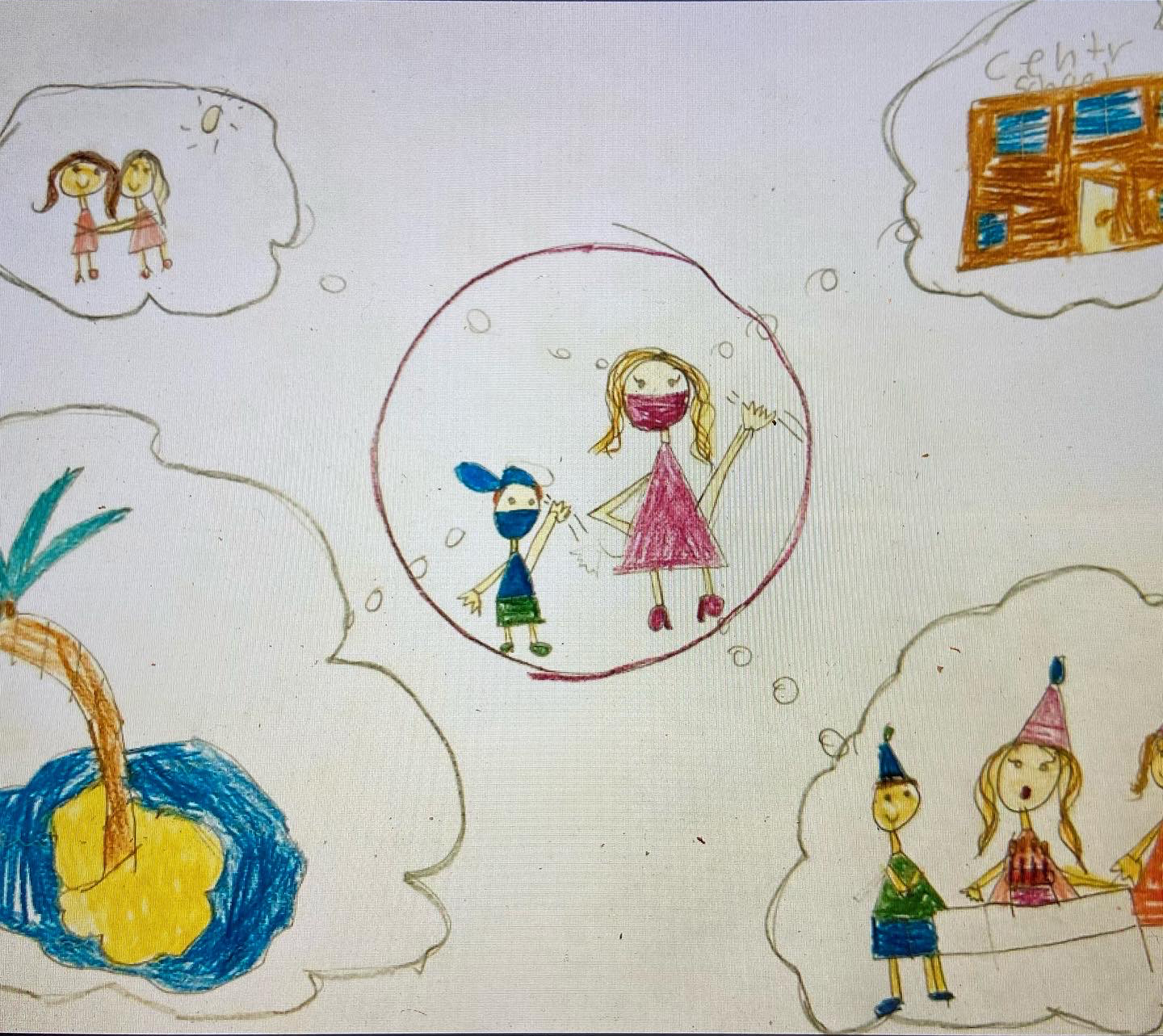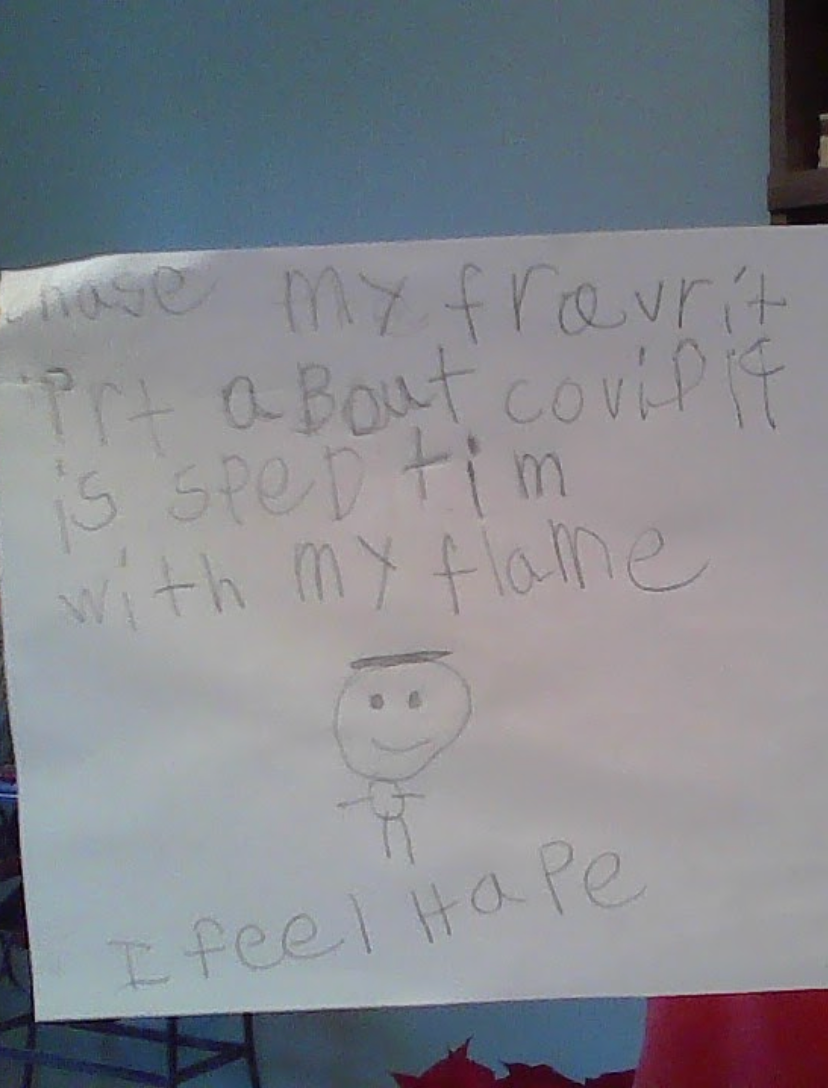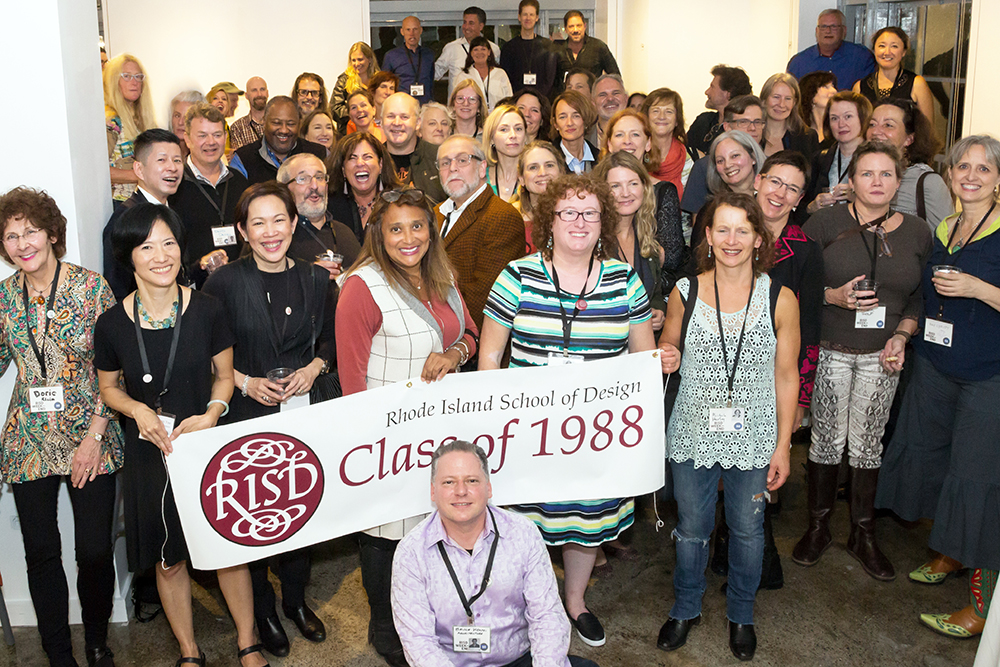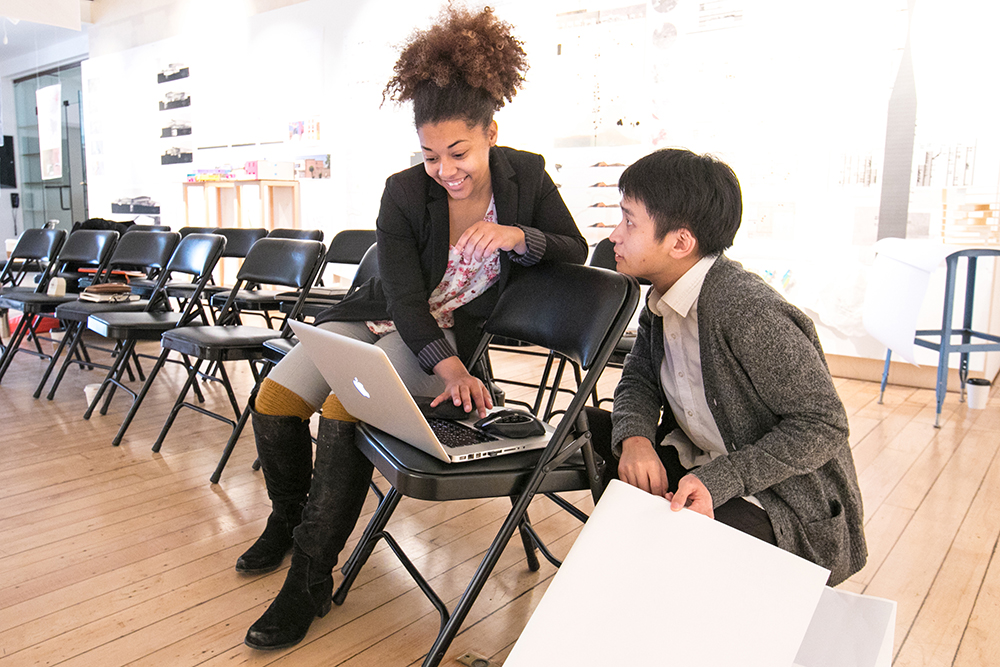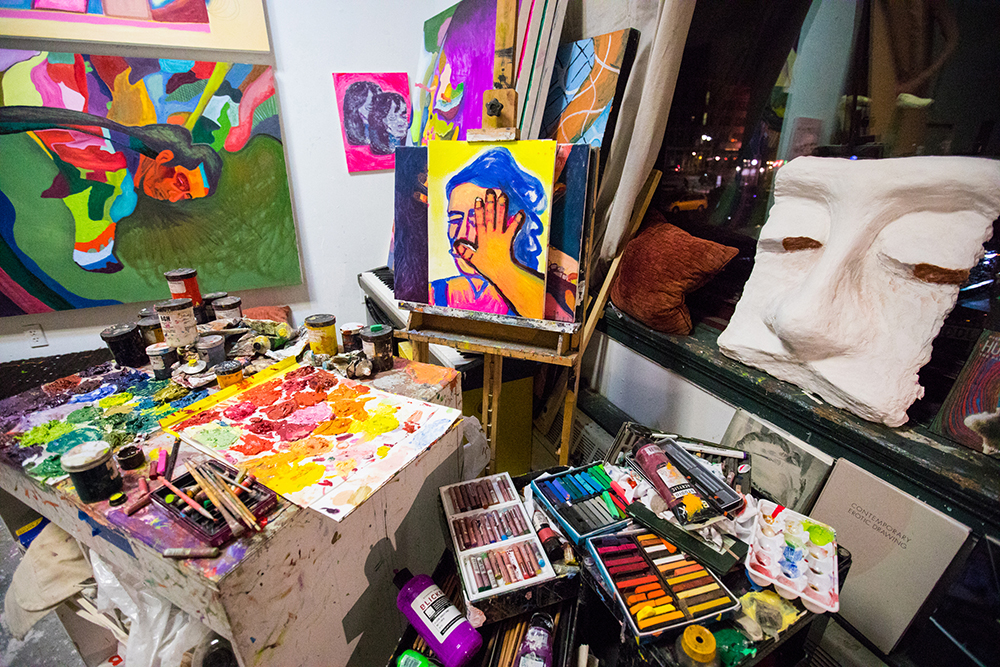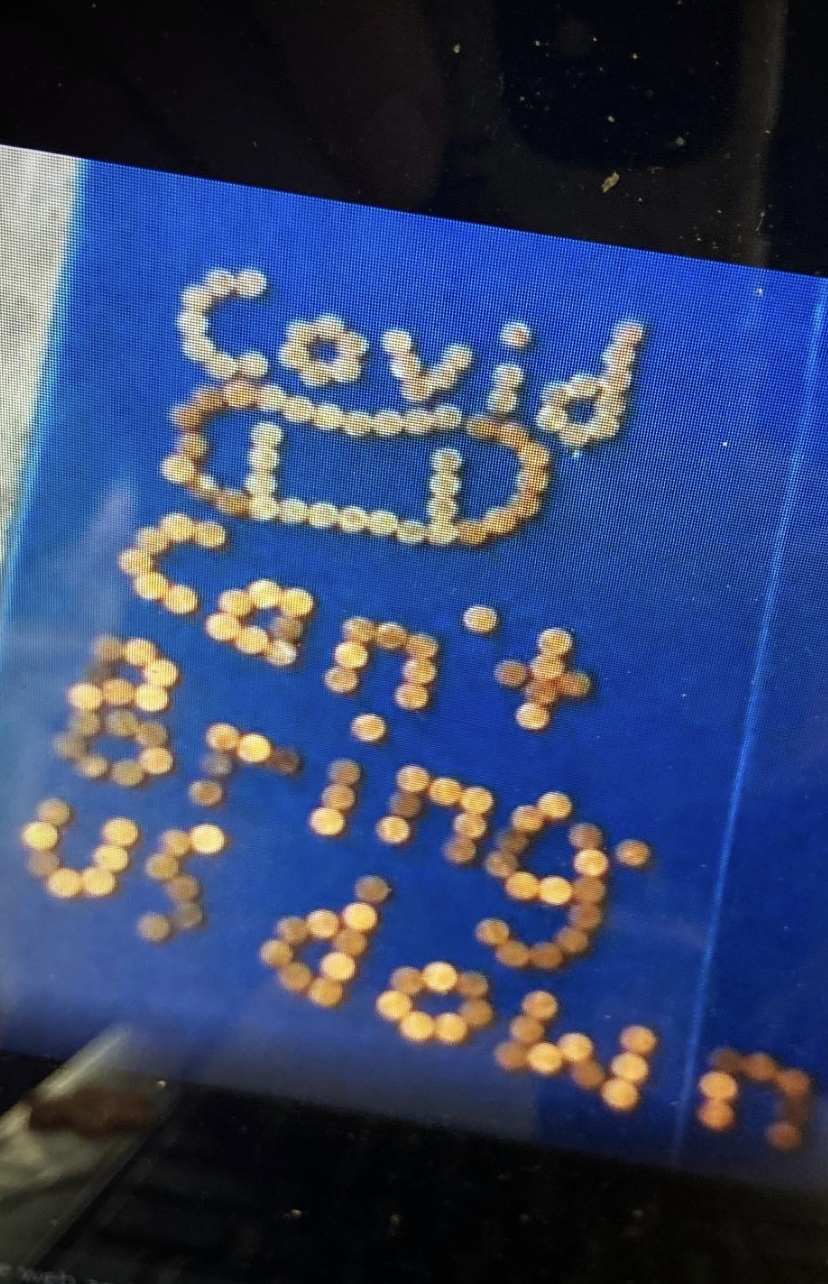
Art in the Time of Corona
This fall, the life of teachers and students (and their parents) changed dramatically. We went back to school during a pandemic!
But of course, not without change equal to the disruption and panic initially created by COVID in the spring. In fact, due to essential training and logistics, the first day of school was delayed by two weeks. Familiar feelings of being overwhelmed followed us, masked, in and out the front door of the building prefaced by a futuristic touch-free temperature check where I and other mild-mannered colleagues developed a rival animosity toward the robot lady voice reprimanding us to “please face toward the detector frame” even though I always was! I even resented her dismissive “stranger” name calling and red-lit no-entry judgment after she finally registered my forehead and displayed a temperature. And that was just getting in the door.
Tears aside (ours, not the kids!) we reassured our masked selves that this was what we had to do to see our students again; to be in our inspired classrooms; amongst our colleagues and friends. Even though we are physically here together in the building, we can’t be together for most meetings, now held virtually from our own classrooms, silent except for the hum of our standard issue air purifiers.
The first days were sad, though it was amazing to “see” my colleagues at least, realizing the mandatory adaptations to their customary classroom backgrounds. For students, the building looked different in all areas: colorful 6’ tape lines to keep them apart in the hallway, posters of familiar Disney characters wearing masks and holding hand sanitizer lining the hallway at kid eye-level, the funny one of the golden retriever showing the wrong ways to wear a mask, (they laugh at that one every time!) desks placed far apart, bins and crates to segregate student belongings, covered common and play areas, spray painted recess zones, doors designated as single class exits, off limit common areas like the lunchroom, gym, library, music room and my art room. Protocols and schedules evolved over the first three, then six days we were given to be ready for students.
Suddenly, beyond the logistical parameters of COVID-evading knowledge and measures, everything became part of the ripple. My own concerns were how we could teach and learn with masks covering one of the most important points of articulation, comprehension, identification, and expression and how do I teach without being in my classroom and without sharing tables, crayons, books, work, and smiles. Always adamant that my curriculum cannot be taught without a classroom, I refused the countless well-meaning offers of a cart, relying instead on my characteristic creativity to sustain me in developing the way.
Obstacle number 1: space. The irony of this aspect was not lost on me as I had just completed my degree in Curriculum & Instruction Administration with a thesis based in learning environment literally titled Space to Learn and had campaigned for years for outdoor space for student learning on my school’s campus. I had even developed a well received 'Get Outside' challenge the previous year for the month of May. Surveying student results relaying standards-based content covered and campus locations utilized, my hope was to secure permission (and furniture) to add outdoor learning space as accepted universal routine.
Just like that, COVID had granted permissions that were formerly unobtainable. Always an optimist, I see this as an opportunity, even though that annoys me too. Even without access to my own classroom with four windows, colorful work tables, floor space and a curiosity cabinet-inspired nature lab, I was still able to develop an equally charming and inspiring space to learn outdoors which we utilized into November. My colleagues in music and the library and I realized that while recess segregated backyard green spaces, we could claim the “front yard” for our own. The art room is now the soft grass beneath one of two grand honey locust trees. The drawing boards I added to my first budget draft seventeen years ago served as portable desks. My regular quarantine core workouts and increased miles running affording me the strength to lug them out across the bus loop after bus duty each morning.
Obstacle number 2: materials. While the space was set, (only rain and major wind deterred us) the next challenge was materials. Pre-COVID, we shared everything: tables, chairs, markers, scissors, paintbrushes, crayons, pictures, books, charts, rubrics--everything! In those days, open windows and Lysol at the end of flu season seemed to do the trick, but now, no sharing at all. Not to mention, no close contact to model, comment, or converse with friends, let alone to pass out materials “safely”? Do we toss supplies? (against other school rules) Perhaps conveyor belt, carrier pigeon, t-shirt cannon? Like everyone in the world, it was time to think of creative alternatives to established routines and protocols.
Well, without a company credit card or blank check, now would be the time to use up every leftover broken crayon, dry marker, balding paint brush and miniature pencil to supplement any stash of new supplies, materials and resources that escaped spring budget freezes. Yet still, how to divvy up and hand them out? With half of our students attending for two days a week on alternating days, plus fully-remote students at home, I shifted between Ziploc bags that I had brought from home to mini envelopes and donated pencil boxes to develop individual “tool boxes” of drawing materials for each class.
Obstacle number 3: remote learning. For our fully-remote students, I devised curriculum-based supply kits. including all of the materials they would need to complete lessons from home by way of my weekly live online instruction all trimester. This was, perhaps, the most exhausting, tear-jerking task of all. One of the great joys of going to art class and making art is all of the inspiring and often messy materials we spend so much time introducing, learning about, recognizing and experimenting with. While exhausting my stores of materials, I thought about when, and if, this circumstance will change and felt anxious about what budget will replace these materials for next year’s, and even next trimester’s, young artists. As in the spring, remote distribution required delivery of each kindergarten through second grade student's supplies to the classroom in time for their scheduled pick up time.
Knowing my students, but not this situation, I packed each bag with a note I had typed up pleading with these 5-8 year-olds to wait to use these enticing materials until asked to during our weekly online classes-fingers crossed they would! Next, I took pictures of lesson-introducing charts I would normally display on my chart stand at circle time, gathered visual resources, books and motivating materials and set them out on my now perpetually empty work tables. Stubbornly, I packed first week materials in a plastic bin that I vowed to carry (cart-less) down what I would soon find out to be 2 miles of hallway, stairs and schoolyard (and would have been impractical for cart wheels anyway!) Needless to say, my signature colorful school teacher dresses and sandals would immediately be replaced by rule-breaking Nikes and leggings as a means of self-preservation.
Finally, it was time for the first day of school. As with any other night before the first day of school, I couldn’t sleep! I was excited as ever to see my students, having spent the last 4 months of the previous year seeing them through the pinhole screen of my school district-issued Chromebook, balanced on my kitchen island countertop replicating my at-school standing desk. Morning duty was a distanced celebration as cars and half-capacity buses rolled up and children emerged! You have to look hard to identify familiar faces past the masks, but it is possible! Some were clearly under-the-mask-smilers, while some were tentative about their excitement, recognizing us and each other with half our faces covered. Most faces were serious, some understandably vacant; but all of them bravely and purposefully marched straight indoors following their COVID-dictated at-home temperature checks, online question screenings, and no-morning-recess rules.
My colleagues and I greeted children by name, impressing even ourselves! We were ready! Settled into our new, masked reality, friends are again adjusting like champions; funny and sweet as ever on both school building days and home learning days. Their masks turn them into Crayola crayons, kittens, sharks, Marios, ninjas, and more. It’s Halloween everyday-literally, making it fun, escaping reality. And they kept them on! No action required, beyond a little help securing them or reminders to cover their noses. The best part is lining them up and parading them out to our front lawn classroom where, once seated, six feet apart, they can remove their masks, freeing the other 50% of their recognizable adorableness, and breathe. They quickly learned to always secure those masks to their pocket or bracelet-like on their wrist, quite the chase ensues when unattended masks are easily lifted by the wind!
Then, mask-free, they talk! Once freed from the mouth covering, they share and question and delight! And most importantly they learn!!! Without much modification (except major lists and overpacking my box to avoid forgetting any lesson necessity in my off-limits classroom), students are moving their way through their grade-level standards-based curriculum outside. With that, came unforeseen circumstances. They troubleshoot the challenges of outdoor learning: traffic noise, airplanes, lawn mowers, curious public workers, wet grass, etc. They develop creative solutions such as painting signs that say “kids learning . . . shhhh!” and setting up a proposed screen at the road to block noise, sitting on plastic bags to stay dry, and scouring the grass at the end of class for hiding camouflaged crayons and pencils. They delight in leaves falling gently down on them like the same joy they exhibit when it is snowing at recess, birds chirping, monarch butterflies passing through their sight. They get big trucks to honk and wave at dogs (and their walkers) passing by like clockwork, marvel at the sky, how “good it smells” and proclaim the importance of trees to our collective existence!
We tell time by the conveniently located clock tower adjacent to our space. They replace doodling with making leaf people out of nearby supplies of leaves and sticks, make mini leaf piles and squint like vampires in the sunshine. They arrange Andy Goldsworthy-inspired nature mandalas, tuck leaves in the cuff of their shoes and wave heartily to classmates across the lawn in Library or Music. They smile and share their work clipped to their drawing boards to foil the wind and share impromptu things they like about our new classroom space. They miss hugs, sharing birthday cupcakes, holiday parties and being at school everyday, and seeing the other half of their class. But true to their nature, they are resilient, thriving and learning more than they know. And they are calm and patient and optimistic. We are honest in acknowledging this and press our “patience buttons” (our noses!) when we need to.
During this trying, still unbelievable time, unexpected outcomes abound, such as the long elusive and coveted connection with families and parents and grandparents exchanging emails containing student’s work and anecdotal notes about its creation, their response, joy, questions, and mutual gratitude. There are additional benefits including the actual portrayal of Art Education at Centre and a face to the name Mrs. Olson, or Art, as I am sometimes referred to, especially by 5 year-olds! The benefits of small class sizes is evident already in knowing students more quickly, helping them know themselves as learners and advance, perhaps, at a quicker pace, especially for kindergartners. Students are developing great responsibility in managing their art materials at school and at home-learning by logical consequences when they are not prepared. At home, they delight in a lesson-introducing story even through the obscured view of my laptop and have become expert at sharing their work by taking pictures with their Chromebooks! They use the chat for school, not socializing, have perfected proper timing of the raise your hand, applause or thumbs up emojis and know to blur or change their background only once per class.
Other benefits include utilizing previously underutilized space, such as the outdoors, and exhausting last year’s leftover materials. Our hybrid week allows each half of the school two in-person days and everyone home on Wednesdays to learn online with a social-emotional focus (and a major cleaning day at school). These mornings offer great check-in time between academics with student conversations and sharing to maintain ever vital relationships and connection. These afternoons are dedicated to much needed meetings and teacher collaboration. Home days have offered yet another opportunity for students (and me) as I have been challenged to offer broad supplemental curriculum, enrichment-based spanning the school grade levels K-2.
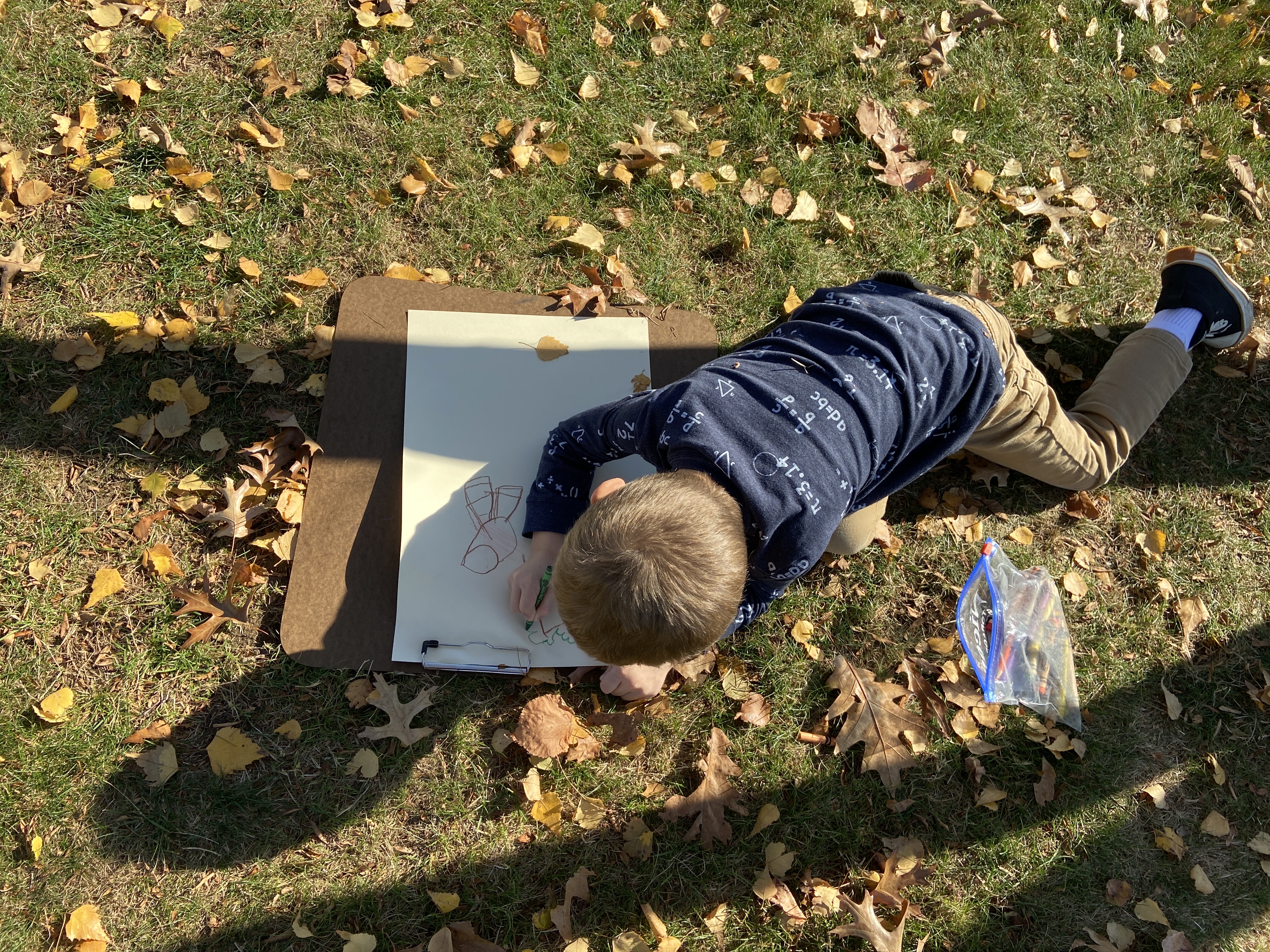
Through this hybrid instruction, I have developed long anticipated lessons that have been percolating for years, just waiting to be written and launched to my eager audience. Art history-inspired artist studies, such as science-integrated Helen Frankenthaler, community art-based provocations introducing Candy Chang and Janet Echelman, challenges based in using nature and the outdoors as media, Goldsworthy-inspired everyday objects and collections-motivated museum exploration. These led to a culminating personal response in the "COVID Can’t Bring us Down" student exhibit which revealed authentic student experiences and perspectives on all things COVID: masks, staying home, school online, distance, fear, adaptation, loss, change and the silver linings of extra home and family time, comfy clothes, new pets, playtime outside, and long walks.
Another silver lining: home day learning offers an amazing platform for unexpected connections with students and families in the listening, learning, wondering, responding, making and sharing we are knowing, supporting and empathizing, far exceeding the often elusive pathway connecting school and home. Thank you and air hugs to parents, grandparents and caregivers everywhere. Your partnership, dedication and encouragement has made all the difference. Finally, our new superintendent is a fixture as she walks over from her office on a weekly basis to support, encourage, snap photos to share and most importantly, listen. She sees the great lengths children, families and teachers are demonstrating to stay in school, which we all believe is best for our students! Recent reports from state officials are recognizing the benefits of keeping our kids in school buildings, citing data, especially from private schools fully returned, with low transmissions as a push for full return. Our district has held fast to maintaining in-person learning and expanding to a full return as soon, and as safe, as possible.
But for me, this joy comes with the unfairness of leaving my new-to-high-school ninth grader at her desk on her own Chromebook each day, as the high school has yet to orchestrate returning 2,000 kids to the building . This is our youngest daughter, the child who, in the spring, repeatedly calmed me by saying “It’s okay!” I want her to be able to meet her teachers and high school classmates beyond a computer screen and I feel guilty that I am at school with my students each day. More patience. I press my nose, my patience button. Like my students’ characteristic, universal visual vocabulary of rainbows and unicorns, things will get better. We’ll see each others’ smiles again! Now, every night, I bring a little bit of the outdoor classroom and memories of another day at school home with me when I take off my shoes with paint-stained fingers and smile as countless little honey locust leaves flutter to the floor: colorful little reminders of another day of learning together. As we end one day and look forward to the next, we hope and pray to maintain our partial in-person model, focused on the eventual, sooner than later, full return and, always, what is best for our students. We are once again inspired, moved and grateful for our resilient students (and their amazing families). We are together, we are learning, and “it’s okay”.
September 23, 2020
Kimberly Olson, BFA, MAT, CAGS
Art Education at Centre School
Hampton, New Hampshire

